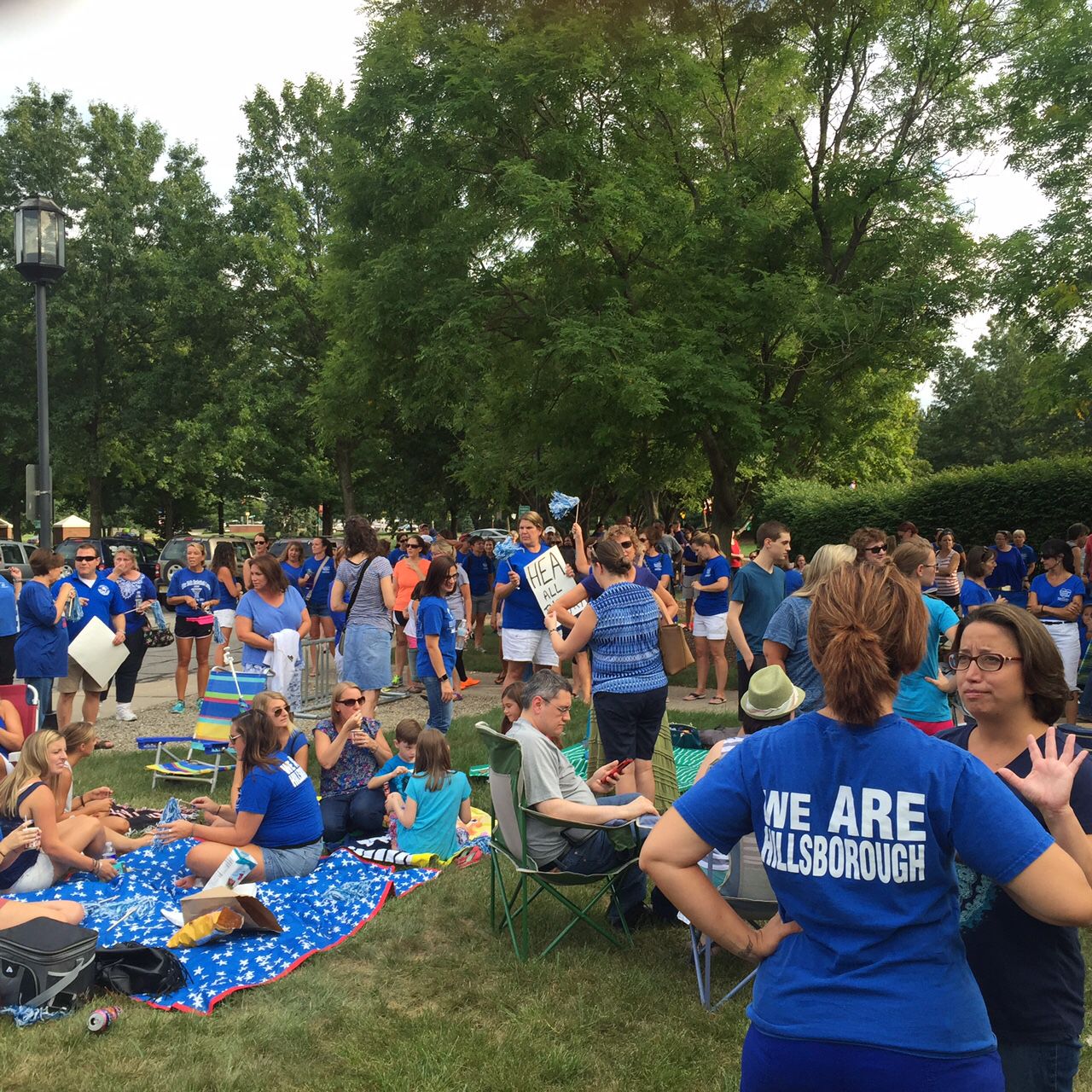By Andrew Martins, Managing Editor
State-mandated mediations between the Hillsborough Township Board of Education and a local teacher’s union will enter their sixth month, as both parties prepare go back to the table in October.
Representatives from the school board and the Hillsborough Education Association have been working since January to craft a new three-year contract for the district’s teachers and staff.
“We’re optimistic that there’s been some movement and we would like to continue working together toward a contract,” Hillsborough Education Association President Henry Goodhue said.
During the most recent mediation hearing on Aug. 31, more than 250 members and supporters of the HEA rallied outside the Board of Education office. Mr. Goodhue said those particular hearings went until 3 a.m.
“We’re still committed to the pursuit of a fair contract and an equitable one that does not cause our members to go backwards,” Mr. Goodhue said. “Hopefully, (the district) has come to understand our solidarity in that pursuit.”
The HEA represents teaching staff, instructional and other aides, maintenance and custodians, and secretaries for the more than 7,000-student district.
The Public Employment Relations Commission appointed a mediator to oversee negotiations when both parties were unable to reach an agreement by the May 31 deadline.
Hillsborough Township Board of Education President Thomas Kinst said the district is hopeful that a new contract can be drawn up soon.
“The BOE remains committed to its students, staff and community during this contract negotiations, as we have with all past contract negotiations, and continues to look forward to achieving a fair agreement through the continuing negotiation and mediation processes,” Mr. Kinst said.
According to sources close to the negotiation process, the two parties had already tentatively agreed to a handful of terms prior to entering mediations. Among those items are clarifications of the school calendar and definitions of additional instructional payments.
Some items that have allegedly been agreed to during mediations include a provision for subcontracting, increases to athletic coaches’ stipends, increases to the number of co-curricular advisors that receive stipends, long-term substitutes’ pay, an increase in accumulated sick leave and changes to the structure and expectations for Professional Learning Communities.
Increases in class coverage and home instruction rates were also included.
As it stands, a new contract would be defined with a term of July 1, 2016 to June 30, 2019.
Ultimately, Mr. Goodhue said the union’s main sticking points continue to be salary percentages and the pursuit of a “sensible, fair health care contribution.”
“There’s obviously some other things to work on, but those are the main sticking points (for contract negotiations) throughout New Jersey,” he said.
Though both sides have been unable to come to terms on those issues, Mr. Goodhue said he was optimistic, since there have been “other districts lately that have opted to settle” throughout the state.
When asked to confirm the tentative agreements that Mr. Kinst said were already in place, Mr. Goodhue lamented that the board president divulged that information. According to him, the state mediator urged both parties to keep those items confidential during negotiations.
“At the beginning of the mediation process it was made clear by the state mediator that both sides should avoid discussing details in public and refrain from negotiating through the press,” Mr. Goodhue said. “The board has decided to ignore the mediator’s directive and release partial truths and inaccuracies. Through its one-sided release, the Board has undermined the good faith required for a successful bargaining process.”
Soon after, both men altered their statements to the press in an effort to dial back the rhetoric between the two parties.
“Mr. Goodhue and I have a respectful disagreement with regard to what either party may communicate,” Mr. Kinst said.
According to the New Jersey School Boards Association, there were 183 districts engaged in contract negotiations when the 2015-16 school year started. This year, that number stands at 141 districts.
“It is not uncommon for 100 to 150 districts to be at the negotiations table when school starts in any given year,” Mr. Kinst said.
Though the HEA is seeking a new contract, officials point out that district employees are currently working under the previous contract, complete with all existing terms and conditions, guarantees of salary and benefits.
“This district is a lighthouse school district that respects its employees, and continues to attract the best candidates when vacancies arise,” Mr. Kinst said.
Despite Mr. Kinst’s assertion that long contract negotiations between school districts and teachers’ unions has become the norm, Mr. Goodhue contested that the people of Hillsborough should not have to wait through the process.
“While it may now be ‘common’ for school districts to reach this point in negotiations, the HEA believes that our students, schools, staff and community are anything but,” he said. “Our staff strives for excellence every day to ensure that the education provided our students is exceptional.”

